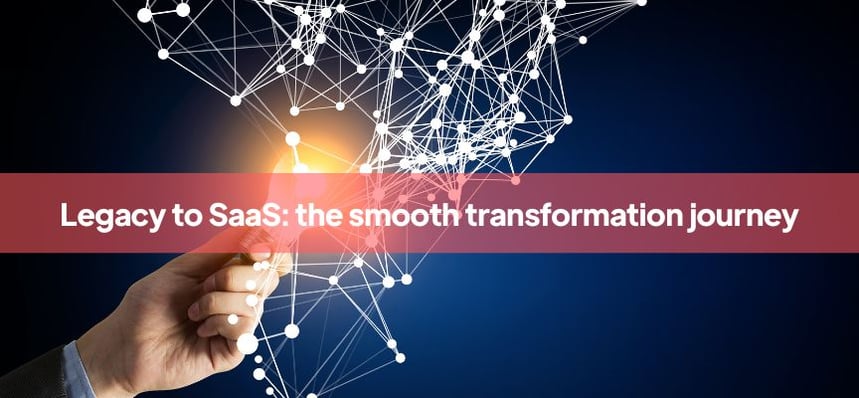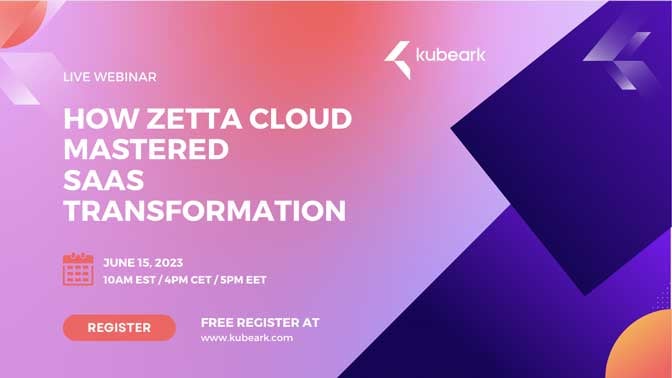In the rapidly evolving technology landscape, businesses are increasingly looking to migrate their legacy software systems to more efficient, scalable, and flexible Software as a Service (SaaS) solutions. However, this transformation is not without its challenges. From managing the intricacies of cloud transactions to ensuring seamless integration with existing infrastructure, the journey towards SaaS transformation can be filled with roadblocks.
Key strategies for successfully migrating legacy applications to the cloud
The first step in a successful SaaS transformation is migrating legacy applications to the cloud. This process involves several key strategies, each of which plays a crucial role in ensuring a smooth and efficient transition:
- Dynamic deployment: In the era of personalized experiences, businesses need the ability to deploy a dedicated version of their software for each customer in seconds. This not only reduces time-to-market but also simplifies the SaaS transition process. With next-gen platforms that offer dynamic deployment, businesses can cater to individual customer needs while maintaining operational efficiency.
- Efficient multi-cluster management: As businesses scale, managing multiple software clusters across different environments can become a complex task. Streamlining software lifecycles with dynamic deployment, efficient multi-cluster management, and configurable app blueprints can ensure robust governance and compliance while reducing human errors. This is particularly important in multi-cloud and multi-infrastructure environments, where consistency and control are key to managing costs and mitigating risks.
- Zero-downtime updates: In today's fast-paced digital world, downtime is not an option. Businesses need to be able to maintain and update their software seamlessly, without disrupting their services. Next-gen platforms that offer zero-downtime updates and adaptive maintenance, powered by SVN/CI/CD integration, automated workflows, and job management, can help businesses stay ahead of the curve. This not only boosts preventive maintenance but also ensures secure, up-to-date operations.
- Real-time usage and cost optimization: As McKinsey points out, data-driven decision-making can lead to significant improvements in profitability. By leveraging real-time usage and cost optimization insights, integrated into BI tools, businesses can make data-driven decisions that maximize their technology ROI. This is particularly important in the context of resource management, where understanding usage patterns can help businesses allocate their resources more effectively and reduce wastage.
According to a Forrester report, businesses should implement enterprise-wide solutions only where they need to deliver a consistent customer experience quickly. In other areas, businesses should be guided by their specific, urgent needs, allowing them to choose their own software solutions.
However, speed should not come at the cost of quality. While it's important to act quickly, businesses must also protect their units from common mistakes. This can be achieved by nominating preferred suppliers, publishing guidance on issues such as contracts and security, and insisting on a robust selection process.
Addressing the challenges of SaaS monetization and pricing models
As businesses transition to SaaS solutions, they also need to rethink their monetization and pricing models. SaaS offers a range of pricing structures that can be tailored to meet customer needs and expectations while maximizing profitability. However, choosing the right model requires a deep understanding of the customer's value perception and a flexible approach to pricing.
Ensuring a secure and compliant SaaS environment
Security and compliance are paramount in the SaaS environment. As businesses migrate their legacy systems to the cloud, they must ensure that they maintain high security standards and comply with relevant regulations to protect customer data and build trust.
SaaS transformation is a complex process that requires careful planning and execution. By understanding customer needs, reassessing supplier relationships, and prioritizing speed and quality, businesses can successfully navigate their SaaS transformation journey and reap the benefits of modern, flexible, and efficient software solutions. By leveraging these strategies and insights, businesses can ensure a smooth and successful migration of their legacy applications to the cloud, setting the stage for a successful SaaS transformation.
Unleashing ML's SaaS superpowers - join the webinar
It becomes evident that businesses require expert guidance and practical insights to navigate their SaaS transformation journey successfully. This is where our upcoming webinar steps in as a valuable resource. We invite you to join us in this insightful session, where we will delve deeper into the strategies for migrating legacy applications to the cloud, managing multi-cluster environments, ensuring zero-downtime updates, and optimizing usage and costs in real-time.
Furthermore, we will address the critical aspects of SaaS monetization and pricing models, and discuss the importance of maintaining a secure and compliant SaaS environment. This webinar is designed to equip you with the knowledge and tools necessary to ensure a smooth and efficient transition to SaaS, thereby enabling your business to stay competitive in the modern digital age.
Don't miss this opportunity to learn from industry experts and gain actionable insights. Register now.


